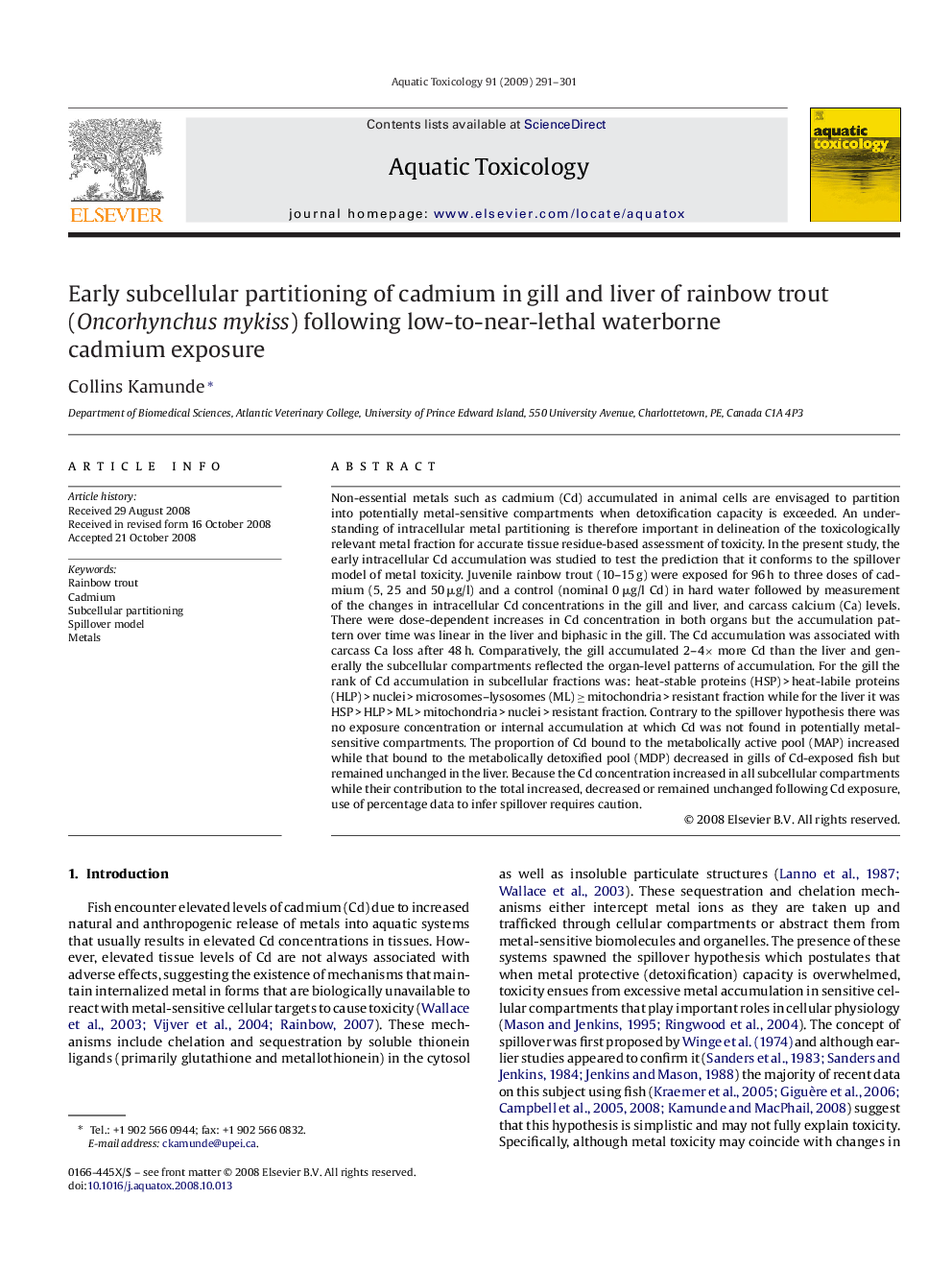| کد مقاله | کد نشریه | سال انتشار | مقاله انگلیسی | نسخه تمام متن |
|---|---|---|---|---|
| 4530286 | 1324694 | 2009 | 11 صفحه PDF | دانلود رایگان |

Non-essential metals such as cadmium (Cd) accumulated in animal cells are envisaged to partition into potentially metal-sensitive compartments when detoxification capacity is exceeded. An understanding of intracellular metal partitioning is therefore important in delineation of the toxicologically relevant metal fraction for accurate tissue residue-based assessment of toxicity. In the present study, the early intracellular Cd accumulation was studied to test the prediction that it conforms to the spillover model of metal toxicity. Juvenile rainbow trout (10–15 g) were exposed for 96 h to three doses of cadmium (5, 25 and 50 μg/l) and a control (nominal 0 μg/l Cd) in hard water followed by measurement of the changes in intracellular Cd concentrations in the gill and liver, and carcass calcium (Ca) levels. There were dose-dependent increases in Cd concentration in both organs but the accumulation pattern over time was linear in the liver and biphasic in the gill. The Cd accumulation was associated with carcass Ca loss after 48 h. Comparatively, the gill accumulated 2–4× more Cd than the liver and generally the subcellular compartments reflected the organ-level patterns of accumulation. For the gill the rank of Cd accumulation in subcellular fractions was: heat-stable proteins (HSP) > heat-labile proteins (HLP) > nuclei > microsomes–lysosomes (ML) ≥ mitochondria > resistant fraction while for the liver it was HSP > HLP > ML > mitochondria > nuclei > resistant fraction. Contrary to the spillover hypothesis there was no exposure concentration or internal accumulation at which Cd was not found in potentially metal-sensitive compartments. The proportion of Cd bound to the metabolically active pool (MAP) increased while that bound to the metabolically detoxified pool (MDP) decreased in gills of Cd-exposed fish but remained unchanged in the liver. Because the Cd concentration increased in all subcellular compartments while their contribution to the total increased, decreased or remained unchanged following Cd exposure, use of percentage data to infer spillover requires caution.
Journal: Aquatic Toxicology - Volume 91, Issue 4, 9 March 2009, Pages 291–301